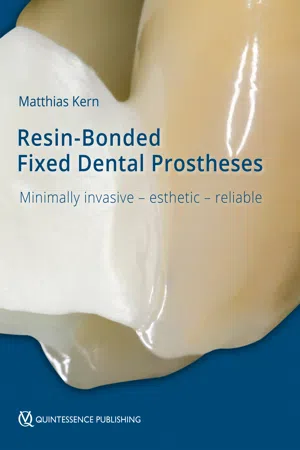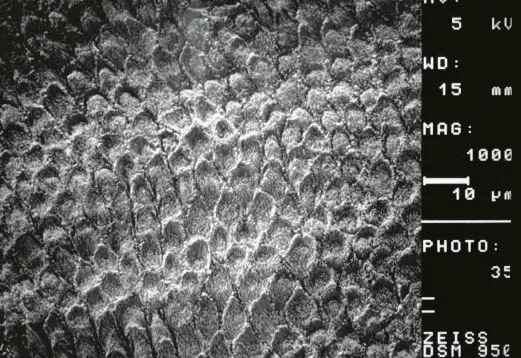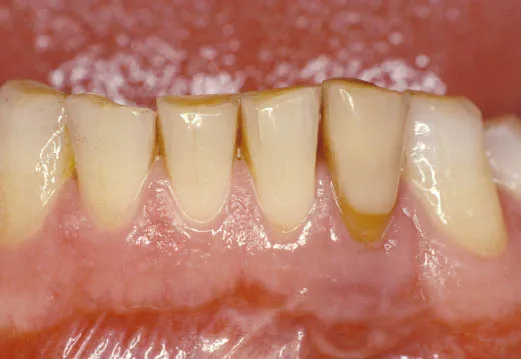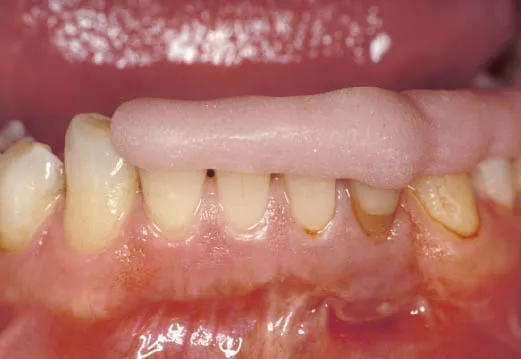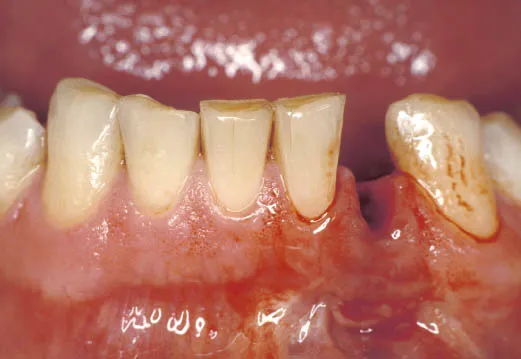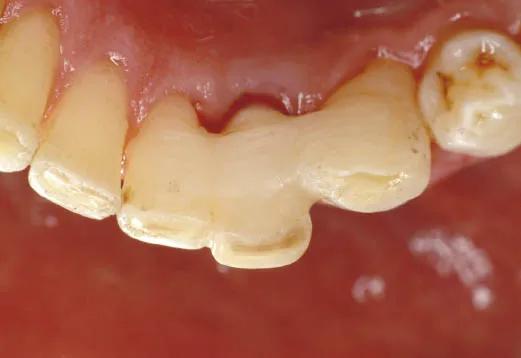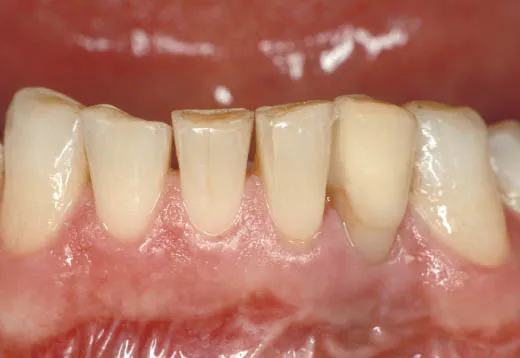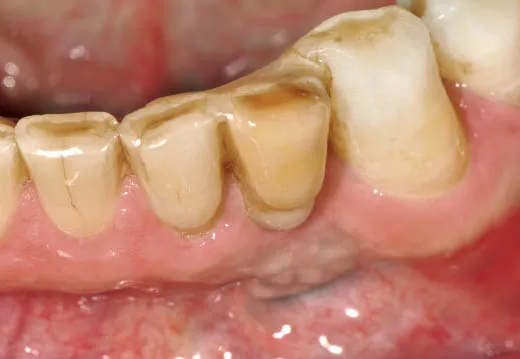![]()
Chapter 1
Why RBFDPs evolved to a single-retainer design
![]()
Buonocuore’s20 development of the acid-etch technique for enamel 60 years ago provided the basis to achieve high and durable enamel bonding using dental resins (Fig 1-1). In the 1970s, artificial teeth were initially bonded with composite resin to adjacent abutment teeth for anterior tooth replacement37 using the acid-etch technique. However, the longevity of these purely resin-based restorations was rather limited.
Today, extracted natural or artificial teeth can still be adhesively bonded in the same way to serve as long-term provisional restorations, e.g. when inflamed tissues in the alveolar ridge need time to heal prior to the fabrication of the final prostheses. It requires no great effort to shorten an extracted tooth by cutting off its root and to bond it back adhesively. However, after removing the root the remaining crown should be sealed on its cervical end using a dentin adhesive, and by using a tooth-colored composite resin, an ovate pontic basis is formed. The ovate pontic should reach 2 to 3 mm into the extraction socket and support the marginal gingiva circumferentially (immediate pontic technique, compare with Fig 5-11). In this way, the blood coagulum in the extraction socket is also protected. In the presented case (Figs 1-2 to 1-9), the resin bonding of the extracted and shortened tooth was reinforced using a polyethylene fiber net (Ribbond). Figure 1-9 presents the restoration after 14 years of clinical service. This case is an example of the excellent durability of bonding to enamel. Mostly, such long-term provisional restorations will fail after several years of clinical service due to a fracture of the elastic fiber-reinforced resin bonding. However, at this stage the hard and soft tissues have healed, so that either a final resin-bonded fixed dental prosthesis or a single tooth implant can be used for the final prosthetic restoration.
Fig 1-1Enamel etching pattern after etching with phosphoric acid (scanning electron microscopic photo at 1000× original magnification).
Fig 1-2Labial view of the hopeless tooth 32 (situation after repeated unsuccessful apicoectomies done elsewhere).
Fig 1-3Fabrication of an incisal-positioning splint prior to extraction of tooth 32.
Fig 1-4Situation after extraction of tooth 32. Care was taken to ensure complete filling of the extraction socket with blood.
Fig 1-5Basal view of the removed tooth revealing an untreated lingual root canal, and a crack in the labial canal wall.
Fig 1-6Reshaping the root portion with adhesive techniques and composite resin into an ovate pontic shape.
Fig 1-7Occlusal view of tooth 32 that was adhesively fixed with composite resin reinforced with a lingual fiber net under rubber dam isolation.
Fig 1-8Labial view of tooth 32 after complete healing.
Fig 1-9Status 14 years after reinsertion of the extracted reshaped tooth [Source: CDT Matthias Hasselberg, Eckernförde, Germany].
These composite resin fixed teeth did not provide good long-term results on a regular basis. To improve longevity, Rochette80 suggested using metal-based resin-bonded fixed dental prostheses (RBFDPs) with two retainer wings for anterior tooth replacement. Macromechanical retention for the metal retainer wi...
